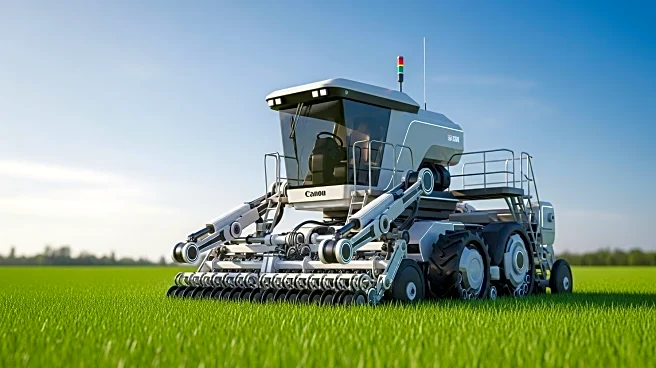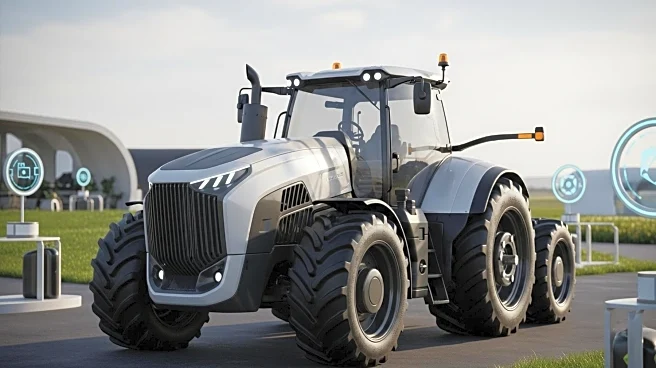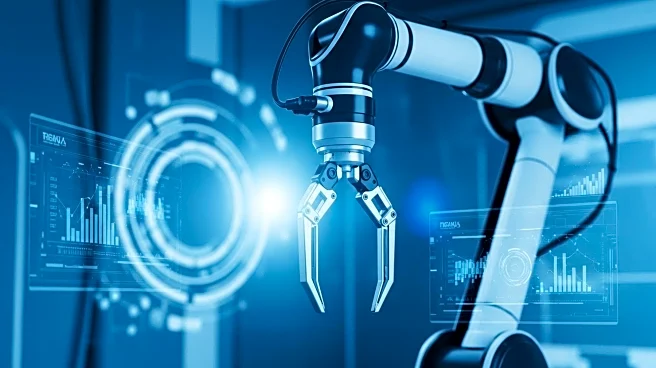What's Happening?
The global agricultural robots market is projected to grow from USD 15.67 billion in 2024 to approximately USD 88.15 billion by 2032, according to Maximize Market Research. This growth is driven by the increasing adoption of automation in farming operations across North America, Europe, and Asia. Key factors contributing to this expansion include labor shortages, rising farm wages, and the demand for food security. The integration of AI, IoT, and 5G technologies is creating smarter, autonomous agricultural systems, enhancing productivity and reducing resource wastage. North America currently holds the largest market share, while Asia Pacific is expected to show robust growth due to increasing agricultural mechanization and investments in agri-tech.
Why It's Important?
The growth of the agricultural robots market is crucial for addressing labor constraints and enhancing farm productivity. Automation in agriculture helps mitigate the impact of labor shortages, ensuring efficient farming operations and safeguarding yields. The integration of advanced technologies like AI and IoT enables precision agriculture, which improves resource management and reduces wastage. This shift towards automation supports sustainable farming practices and contributes to food security, which is increasingly important amid global population growth and climate challenges. The market expansion also presents opportunities for technological innovation and economic growth in the agriculture sector.
What's Next?
The agricultural robots market is expected to continue its rapid growth, with increased adoption of driverless tractors, automated harvesting systems, and drones. The integration of AI, machine learning, and cloud computing will further enhance the capabilities of agricultural robots, enabling more efficient operations and predictive decision-making. Challenges such as high capital expenditure and connectivity issues in rural areas will need to be addressed through financing models, government incentives, and training programs. As the market evolves, strategic partnerships, product launches, and mergers and acquisitions will shape the competitive landscape, with companies focusing on AI-driven autonomy and modular design to capture market share.










